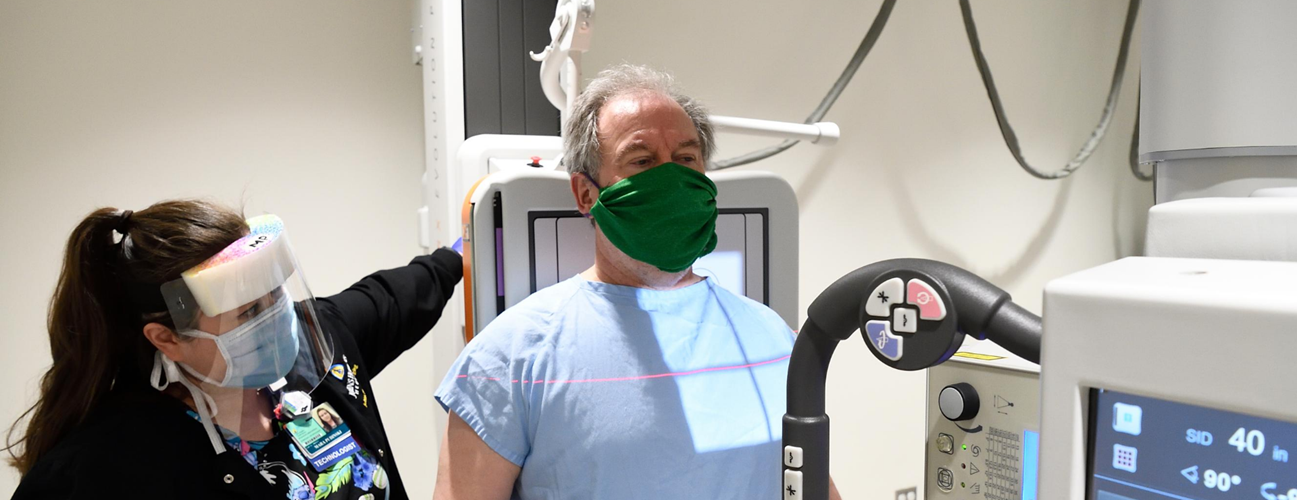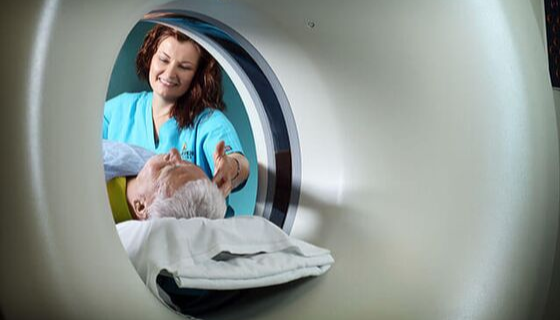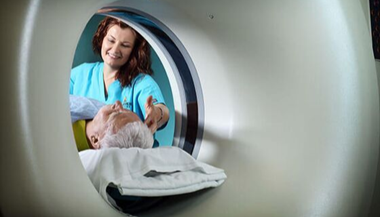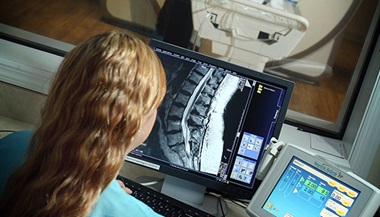CT Scan Versus MRI Versus X-Ray: What Type of Imaging Do I Need?
Featured Expert:
If you’ve ever had an injury, chances are you’ve had an imaging exam. Imaging tests are extremely powerful tools that can help doctors diagnose a range of conditions. However, imaging tests are not the same as one another. Learn the differences between a CT scan, MRI and X-ray so you can have an informed discussion with your doctor about which type of imaging is right for you.
CT scans, MRIs and X-rays are all diagnostic tools that allow doctors to see the internal structures of the body. They create images using various forms of electromagnetic energy such as radio waves and X-rays. These imaging technologies differ widely when it comes to:
- Accessibility
- Resolution (level of detail in the images)
- Type of energy used
What injuries require an X-ray?
An X-ray, also called a radiograph, sends radiation through the body. Areas with high levels of calcium (bones and teeth) block the radiation, causing them to appear white on the image. Soft tissues allow the radiation to pass through. They appear gray or black on the image.
An X-ray is the fastest and most accessible form of imaging. An X-ray exam only takes a few minutes to complete. “That’s usually the first-line imaging,” explains Laura Fayad, M.D., M.S., chief of musculoskeletal imaging at Johns Hopkins Medicine “X-rays often allow us to see major problems with the bones.”
X-rays are ideal for spotting:
- Fractures
- Dislocations
- Misalignments
- Narrowed joint spaces
An X-ray won’t show subtle bone injuries, soft tissue injuries or inflammation. However, even if your doctor suspects a soft tissue injury like a tendon tear, an X-ray might be ordered to rule out a fracture.
What injuries require an MRI?
An MRI, or magnetic resonance imaging, uses a powerful magnet to pass radio waves through the body. Protons in the body react to the energy and create highly detailed pictures of the body’s structures, including soft tissues, nerves and blood vessels. Unlike X-rays and CT scans, MRIs don’t use any ionizing radiation.
At Johns Hopkins, we’ve developed very fast, high-resolution MRIs that can be done in 10 minutes or less. An MRI scanner is a highly specialized machine and may not be available in some imaging facilities or emergency rooms at other hospitals.
“Often, problems are too subtle to see on an X-ray,” says Fayad. “That’s where MRI comes in. An MRI offers excellent contrast resolution for bones and soft tissues.”
MRIs are especially useful for spotting sports injuries and musculoskeletal conditions, including:
- Cartilage loss
- Joint inflammation
- Nerve compression
- Spinal injuries
- Torn or detached ligaments, tendons, muscles and cartilage, such as:
- Meniscal tears
- ACL injuries
- Achilles tendon ruptures
- Sprains and strains
- Rotator cuff tears
What injuries require a CT scan?
A CT scan, or computed tomography scan, sends radiation through the body. However, unlike a simple X-ray study, it offers a much higher level of detail, creating computerized, 360-degree views of the body’s structures.
CT scans are fast and detailed. They take longer than X-rays but are still fast (about one minute). This makes them ideal for emergency situations. “CT indications are often related to trauma, such as someone who was in an accident or fell, to rule out fracture,” explains Fayad.
CT scans can spot:
- Blood clots
- Bone fractures, including subtle fractures not visible on X-ray
- Organ injuries
What are the differences between an MRI and CT scan?
A CT scan may be recommended if a patient can’t have an MRI. People with metal implants, pacemakers or other implanted devices shouldn’t have an MRI due to the powerful magnet inside the machine. CT scans create images of bones and soft tissues. However, they aren’t as effective as MRIs at exposing subtle differences between types of tissue.
Talk to your doctor about types of imaging
You can play a more active role in your care by knowing the differences between a CT scan, MRI and X-ray. Don’t be afraid to ask your doctor why a particular type of imaging test has been recommended.
Often, your doctor will have consulted with a radiologist about what test you need.
“Radiologists are the doctor’s doctor,” explains Fayad. “We usually interface with other physicians, but patients are also welcome to talk to a radiologist directly if they have questions about an exam.”
The right imaging can lead to the right diagnosis, which is an essential part of effective treatment. It’s important to choose an imaging center that offers a full range of technologies, and experienced radiologists and technologists who are trained in specific body areas, diseases and imaging techniques.
Johns Hopkins Medicine offers a wide variety of imaging exams, including breast imaging, bone density (DEXA) scans, positron emission tomography (PET) scans, ultrasounds and wellness screenings.








